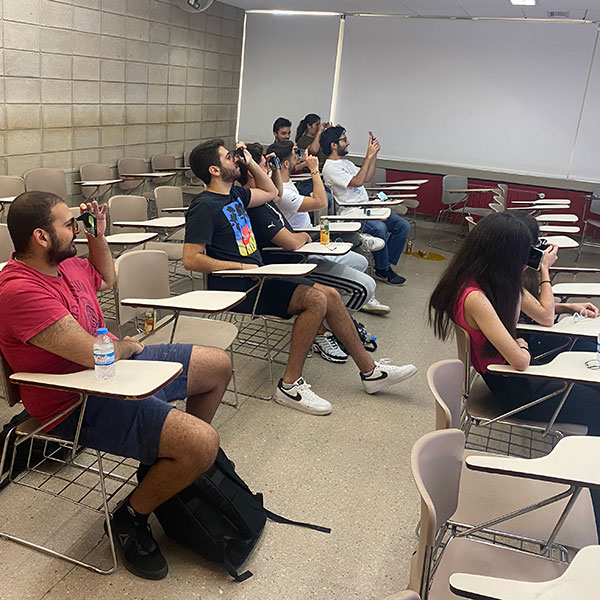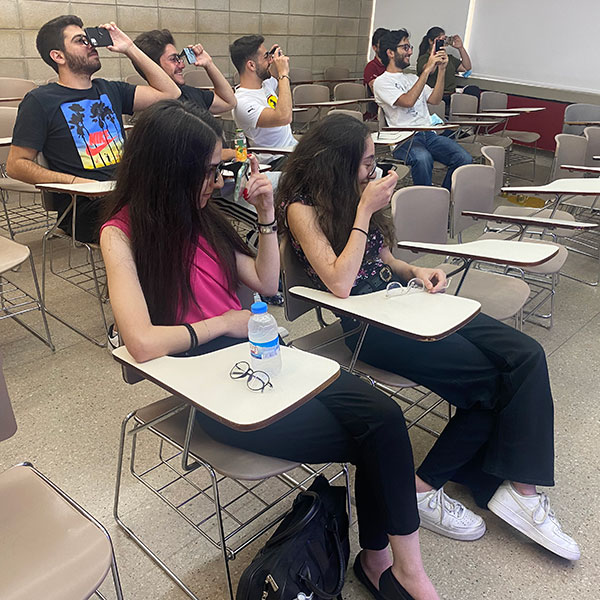Engineering Students Enjoy New Learning Frontiers with Virtual Reality
Engineering Students Enjoy New Learning Frontiers with Virtual Reality
Immersive technology helps learners visualize complicated concepts.
From visualizing atoms colliding in mid-air to grasping the intricate works of a car combustion engine, students at the LAU School of Engineering can now enjoy an immersive learning experience through the use of Virtual Reality (VR) technology in the classrooms.
Starting this fall, mechanical, industrial, mechatronics and petroleum engineering students have been putting on special lenses that allow them to visualize otherwise difficult-to-perceive concepts. VR technology allows for the design of an alternative reality for its users, who can either interact – such as in the context of gaming – or observe it, such as watching a movie unfold while they are at the center of its action.
More engineering students from other departments will soon follow suit, as “practically any concept that requires visualization can be better explained through VR,” said Assistant Professor Evan Fakhoury. Apart from enhanced learning outcomes, he continued, “VR allows our students to better understand and experience the latest and greatest in cutting-edge technology, and the skills learned can be transferable after graduation as VR simulation has reached a truly unprecedented level of realism.”
VR and Augmented Reality (AR) development are already part of the curriculum at the school, as engineering majors have been experimenting with the technology for quite some time.
“We are now equipping our students with the tools necessary to develop and build VR and AR experiences – two highly sought-after skills in the job market today,” said Dr. Fakhoury.
According to student surveys, students have been more engaged when VR content is introduced in the classroom. Concepts that take 30 minutes to illustrate on a whiteboard can now be visualized within seconds. “When you do it and live it rather than reading it, you are more likely to remember it,” said Associate Dean Caesar Abi Shdid.
This offers added value to employers in the future, as students will have a strong working memory of the concepts taught via VR and AR techniques. For one example, students can learn about both the equipment and layout of a specialized lab while training on the basic safety features of that lab through VR. “When faced with the real environment, students who have experienced it in VR are going to be more prepared than their peers who are completely new to the lab setting,” said Dr. Jordan Srour, assistant provost for Educational Resources and Innovation.
While state-of-the-art labs at the School of Engineering’s Learning and Research Center have been game changers in delivering diverse engineering concepts, the use of VR is “an experiential learning add-on, where our goal is not to reinvent the curriculum nor dictate how faculty teach,” clarified Dr. Fakhoury.
Rather, said Industrial and Mechanical Engineering Chair Jimmy Issa, “our mission is to empower our faculty to reach their full potential and bring their ideas to life, all while immersing students in an unparalleled innovative learning experience.”

